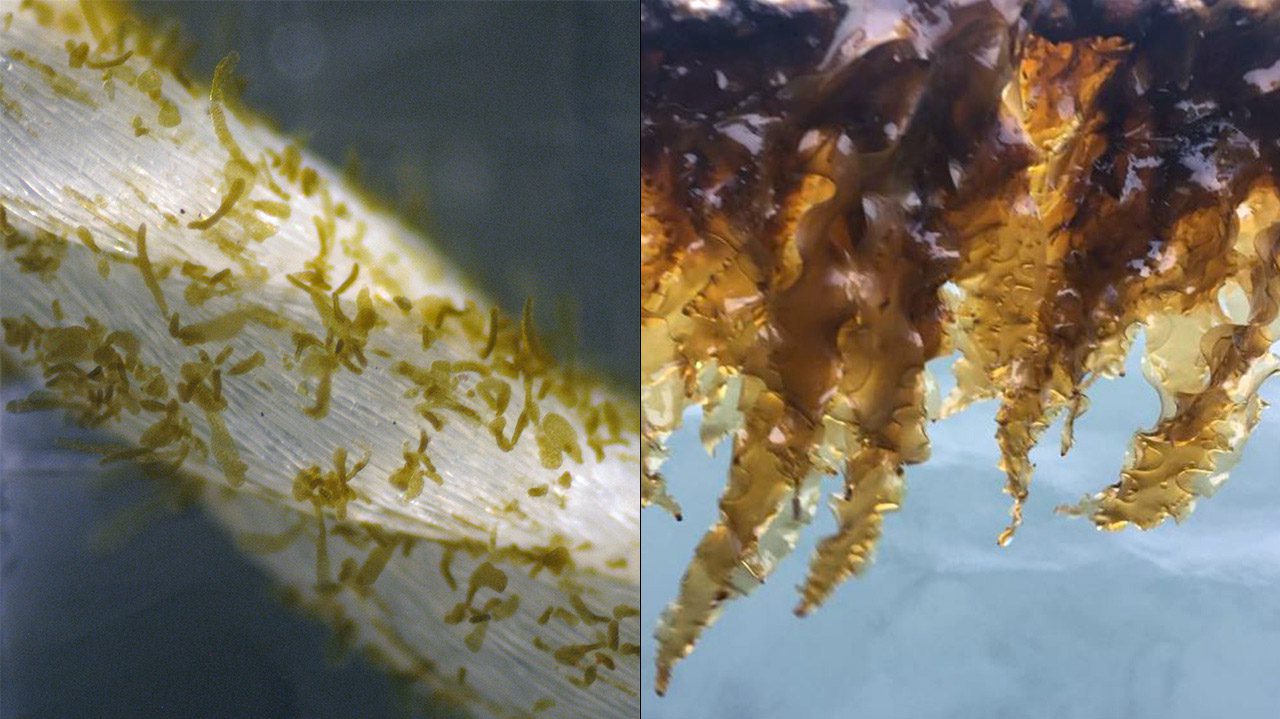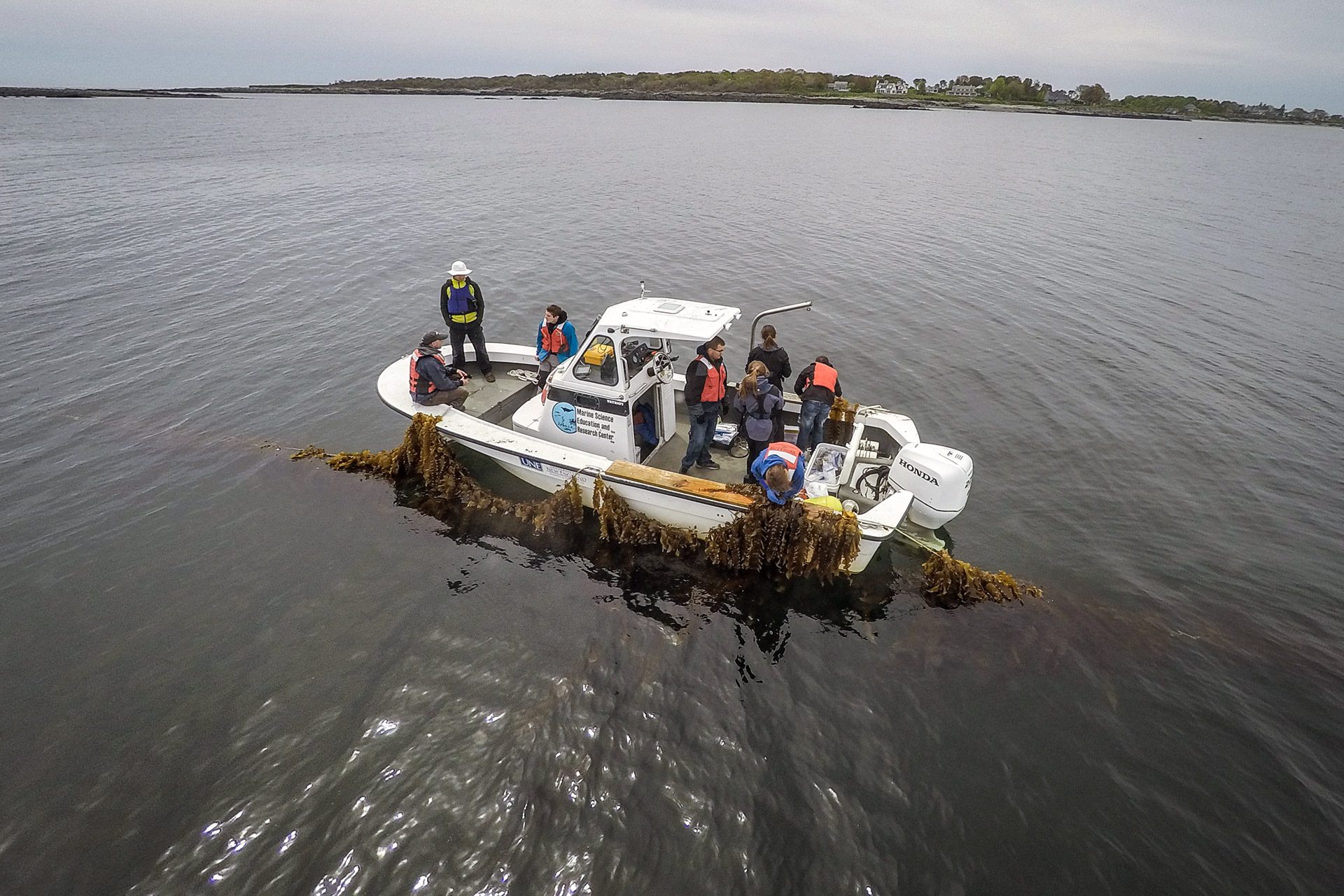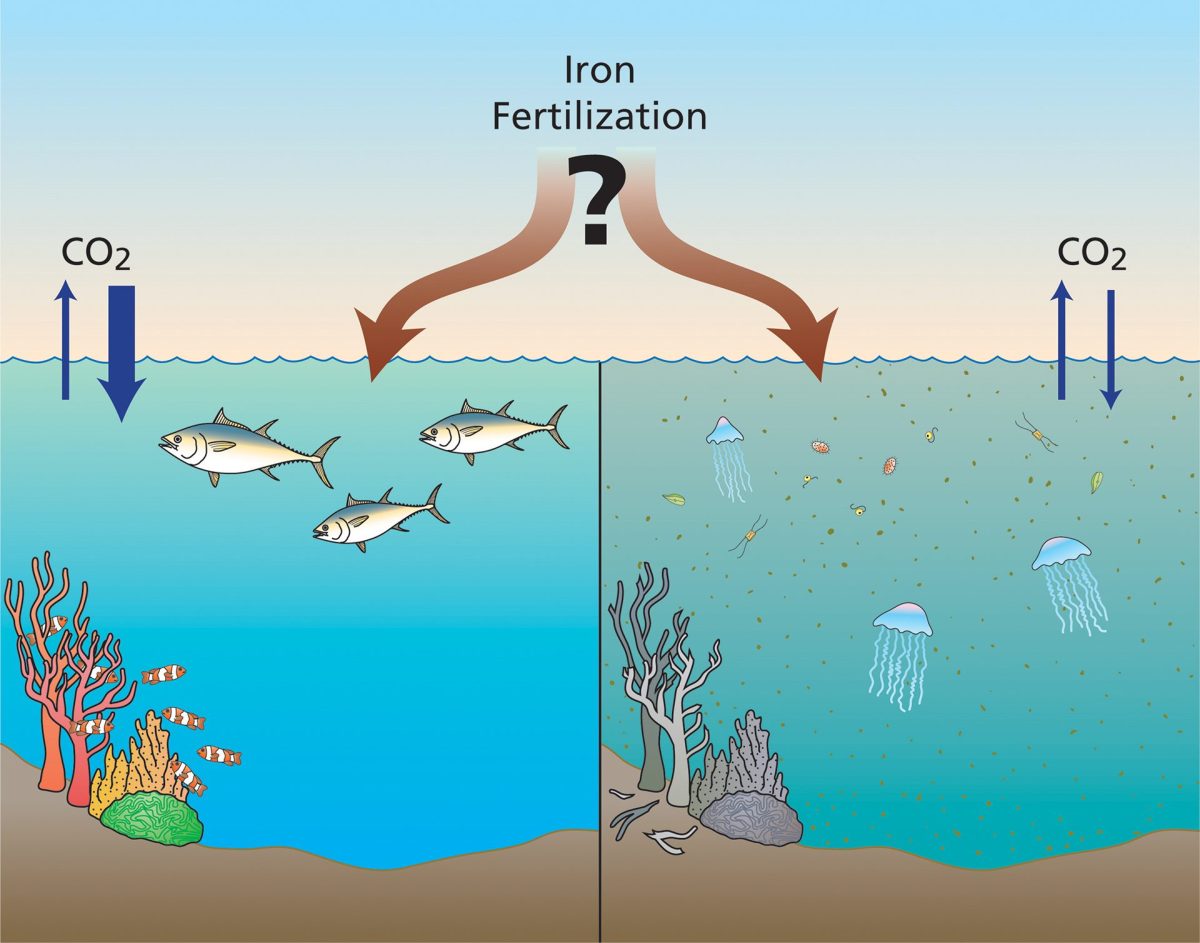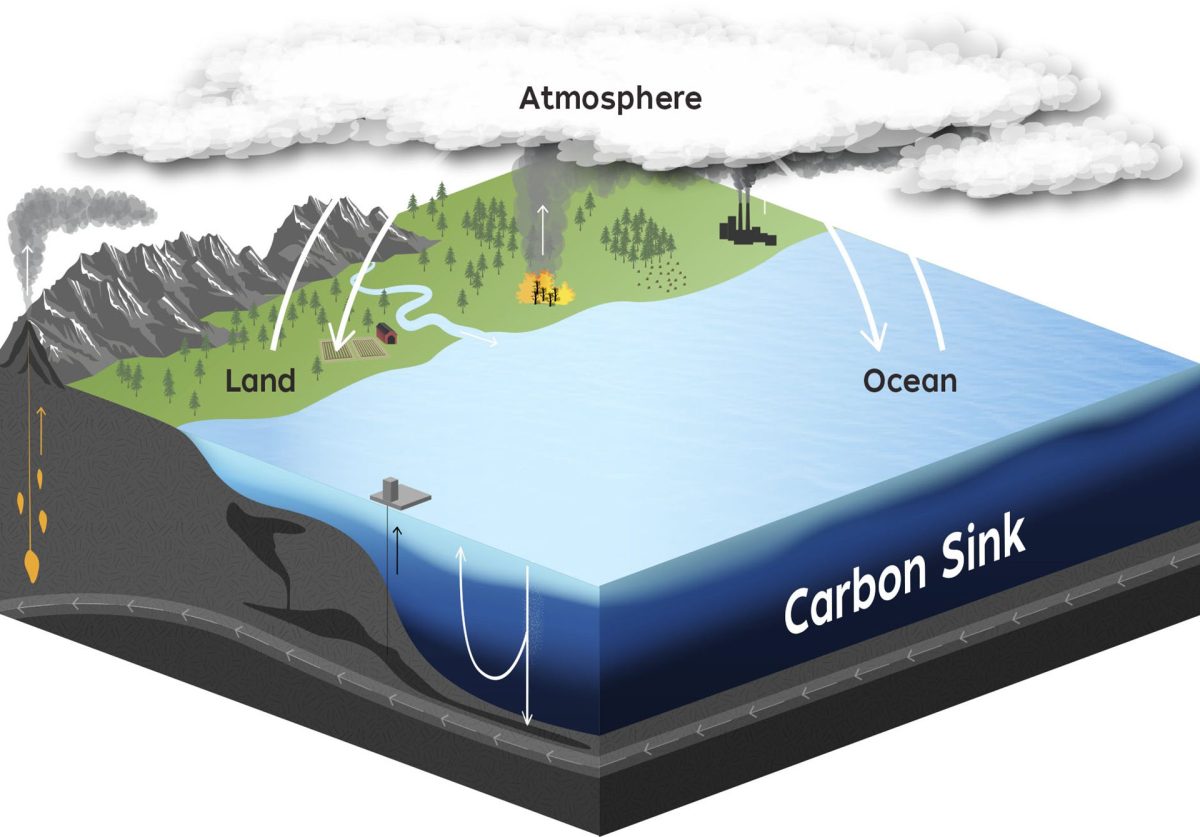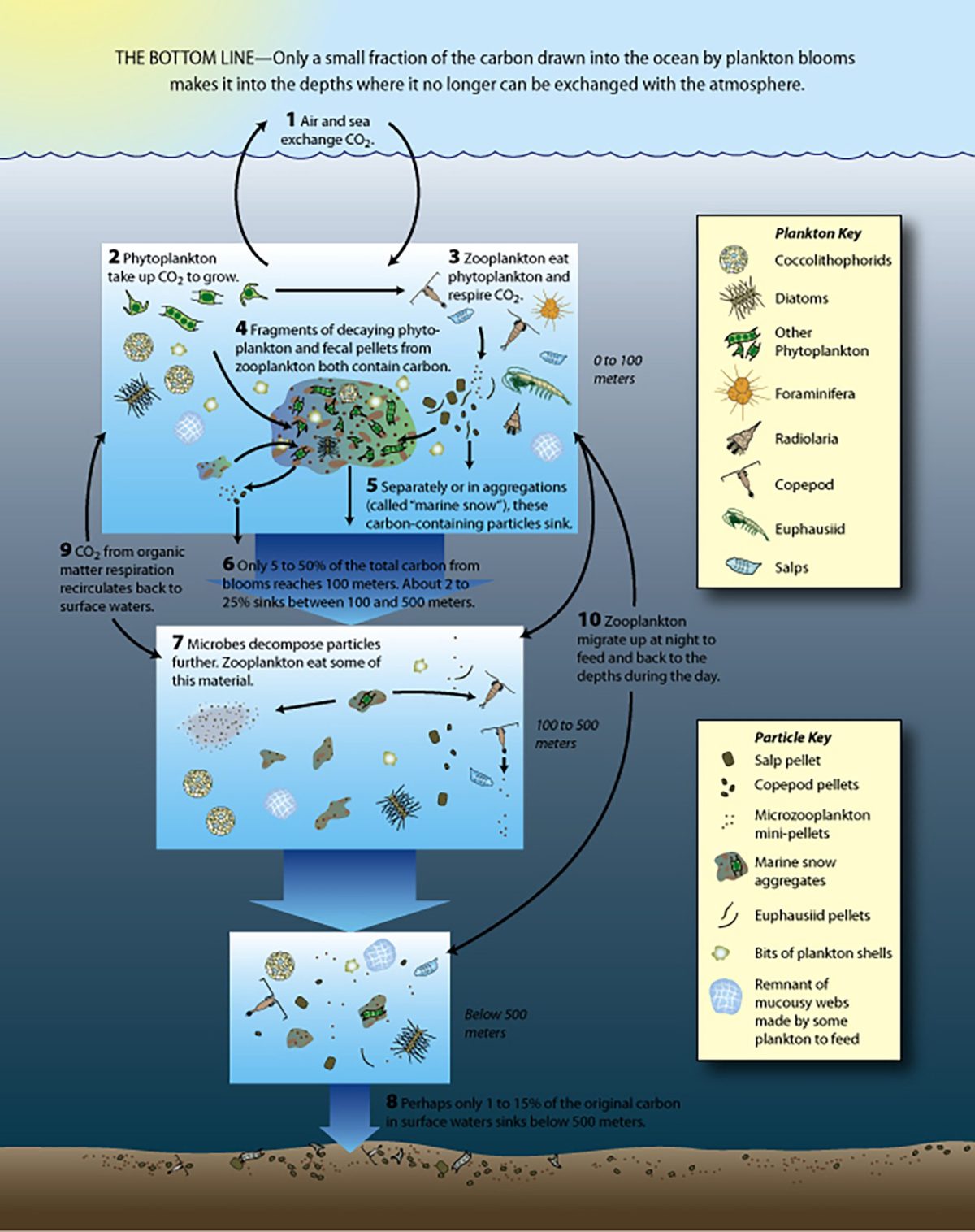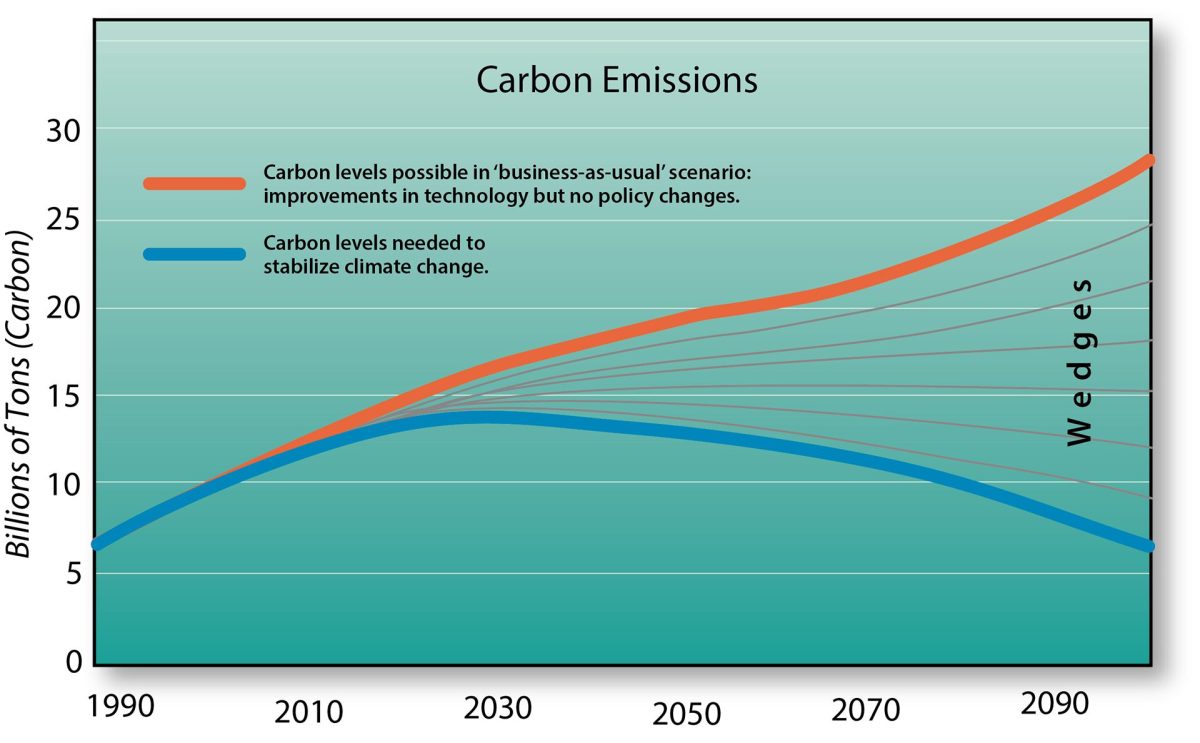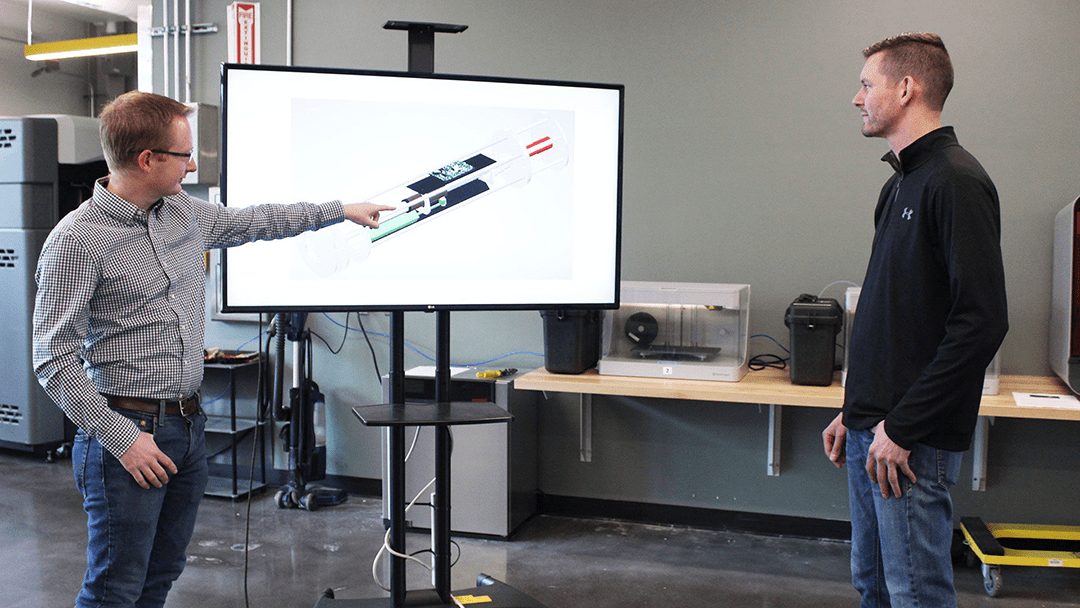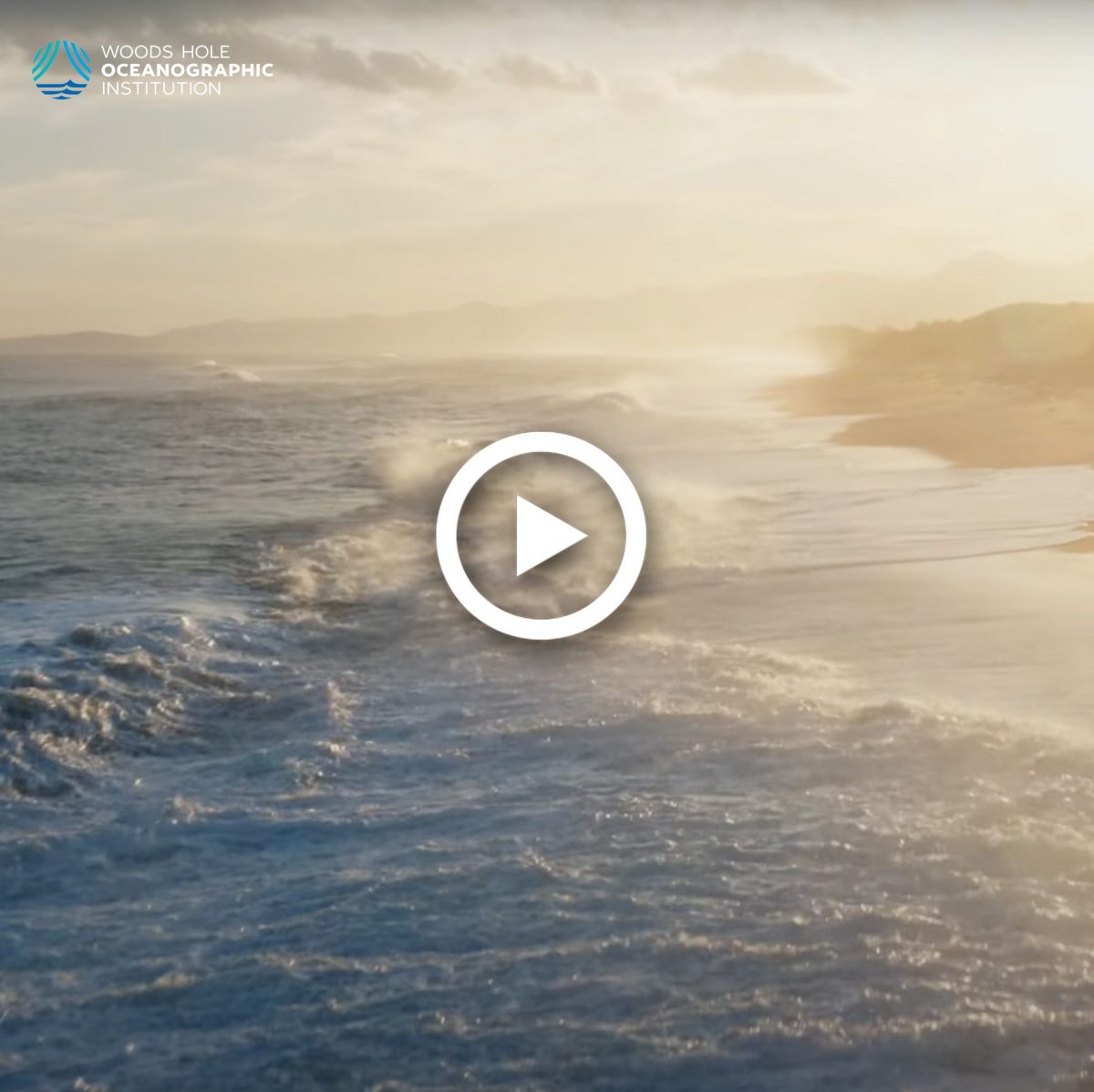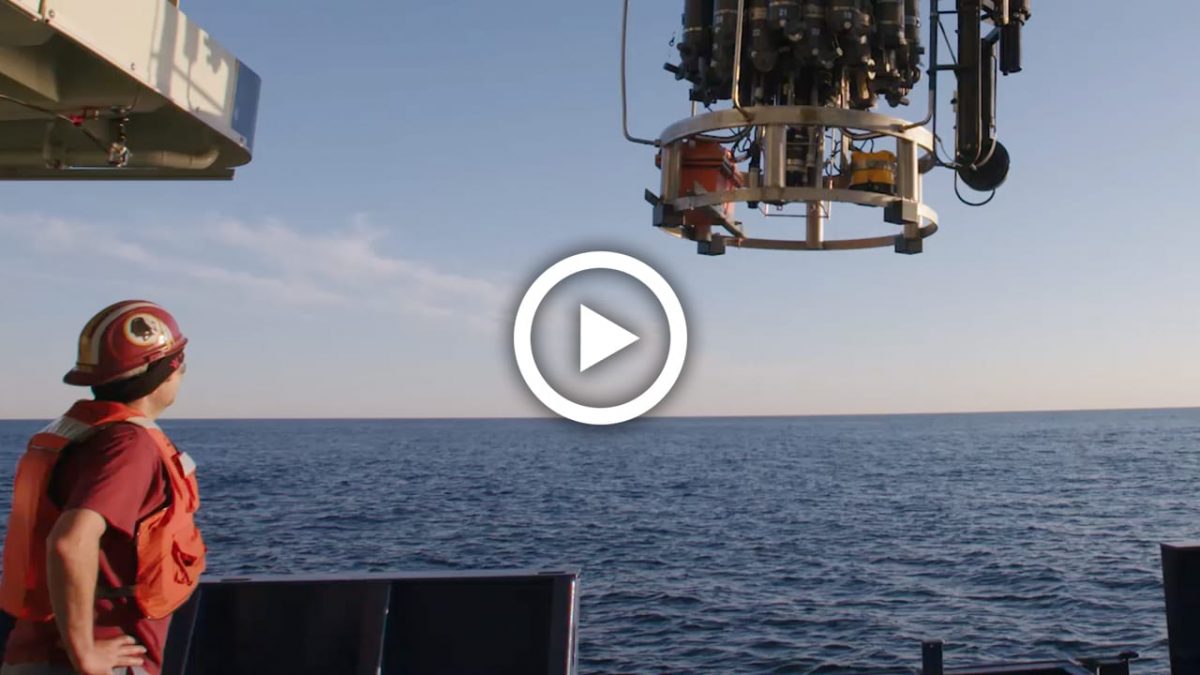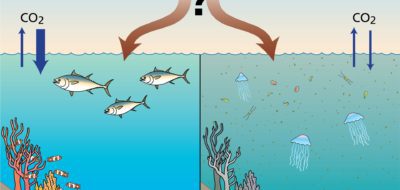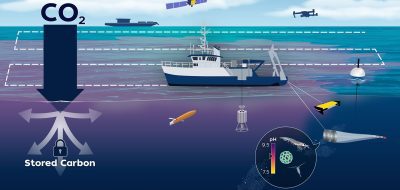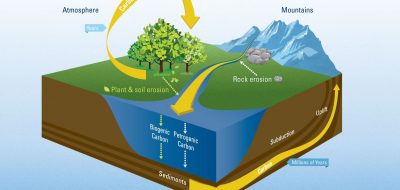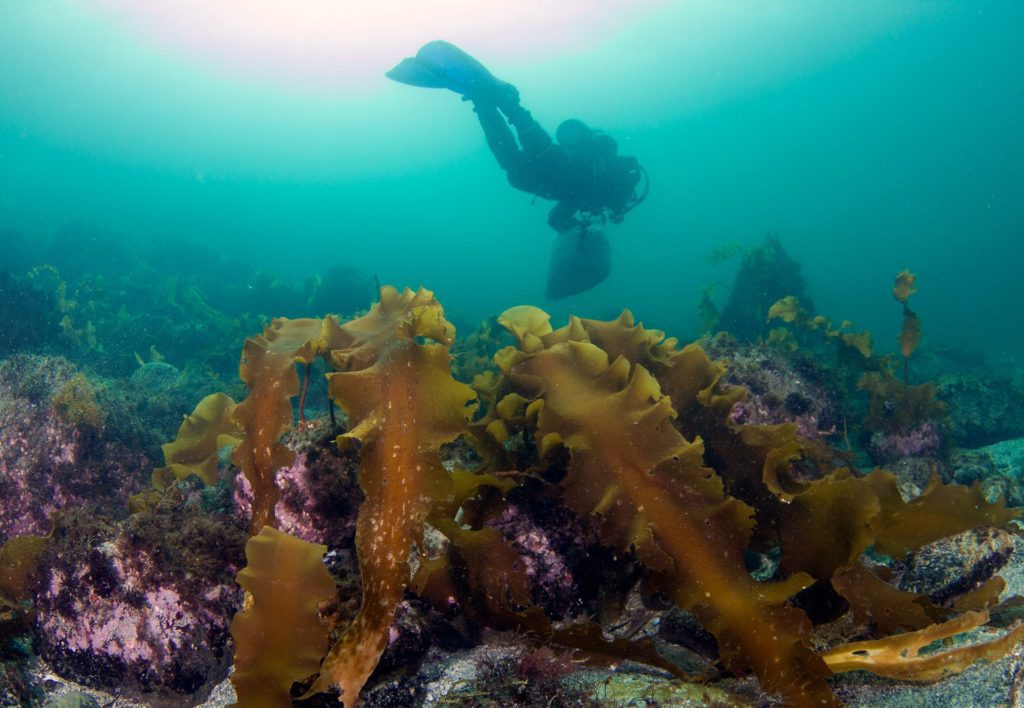
A diver harvests kelp at an offshore aquaculture farm. WHOI researchers are developing techniques to expand kelp cultivation, which has the potential to provide low-impact nutrition, renewable energy, and carbon storage.
What is seaweed?
Seaweed, or marine macrolagae, includes many different kinds of photosynthetic organisms. Some, like kelp and sea lettuce, are found in coastal areas where they cling to the ocean floor in areas shallow enough to receive sufficient light for photosynthesis. Others, like sargassum, float freely in the open ocean.
Seaweeds are incredibly diverse, encompassing thousands of species from two different taxonomic kingdoms. Often categorized by color, they fall into three broad groups: green seaweeds, red seaweeds, and brown seaweeds. Within each group, species range in size and complexity. Brown seaweed, which includes plant-like kelp, grows largest, with some species reaching lengths of 60 meters (almost 200 feet). Under the right conditions, giant kelp can grow as much as 60 centimeters (2 feet) per day.
Seaweeds take up carbon dioxide dissolved in seawater. During photosynthesis, this gas reacts with water to create food for the plants, and oxygen is released as a byproduct. The seaweed then incorporates the products of photosynthesis into its tissues as it grows, locking carbon away from the surrounding water and atmosphere.
Why is it important for climate change?
At the ocean’s surface, gases, including carbon dioxide, constantly move between air and water to establish an equilibrium between the two fluids. As seaweed removes carbon dioxide from seawater, it alters the balance of carbon dioxide between water and air. This causes the gas to move from the atmosphere into the ocean to reestablish that equilibrium. Fast-growing seaweeds can therefore draw substantial amounts of carbon dioxide out of the atmosphere. In large quantities, these organisms can play a role in removing excess carbon dioxide from the atmosphere, helping to slow the rate of climate change.
The key to curbing climate change is to ensure the carbon trapped in seaweed doesn’t return to the atmosphere. This can happen when seaweed dies and decomposes in shallow water. Although the process of decomposition provides important nutrients to coastal ecosystems, it also allows for the return of carbon dioxide to the atmosphere, reversing potential climate gains made during the plant’s growth. But not all seaweeds decompose near shore. Some slide from continental shelves into the depths of the ocean after they die, feeding deep-sea organisms and effectively burying their carbon far from the atmosphere. Here, carbon may settle into the substrate, or it may dissolve into seawater as carbon dioxide. Because of the extreme depths, the gas is unable to reach the atmosphere for long periods of time.
What are ocean scientists doing to put seaweed to use?
Researchers, including those at WHOI, are working to identify and breed strains of tough, fast-growing kelp to be used in kelp farms. This is a multi-pronged effort geared toward mitigating climate change and sustainably feeding a growing human population. Large quantities of kelp can be used to feed people and livestock, a benefit to everyone, since kelp requires only sunlight and the nutrients already available in seawater to grow. Seaweeds can be established on submerged platforms and left for months before harvest.
Some scientists, including those involved with WHOI’s MARINER program, are also exploring the use of seaweeds as biofuels. Traditional methods of biofuel production require freshwater, fertilizer, and other inputs to produce a sizeable crop. Seaweed, on the other hand, requires little more than seawater and sunlight, making it a potentially carbon-neutral form of fuel.
Researchers are exploring the possibility of using seaweed to actively remove carbon dioxide from the atmosphere. The most likely method would be to grow large expanses of kelp that are then sunk to great depths of the ocean (more than 1,000 meters or 0.6 mile). These depths would be required since currents can quickly return seaweed in shallower waters to the surface, releasing dissolved carbon dioxide into the atmosphere when they do. Deliberate deep placement could reduce exposure to currents thereby increasing the amount of time carbon spends in the ocean’s depths to centuries.
All manipulations come with costs, and researchers are trying to understand how their efforts might impact marine ecosystems. They want to avoid harming marine life in their efforts to slow climate change. Because actions often come with unforeseen consequences, ocean scientists are modeling the potential impacts of the above scenarios to reduce negative impacts wherever they can.
Krause-Jensen, D., et al. 2018. Sequestration of macroalgal carbon: the elephant in the Blue Carbon room. Biology Letters, vol. 14. doi: 10.1098/rsbl.2018.0236.
Lubofsky, Evan. King Kelp: Growing a better seaweed to fuel the future. June 12, 2019. https://www.whoi.edu/news-insights/content/king-kelp/
Monterey Bay Aquarium. Giant Kelp. https://www.montereybayaquarium.org/animals/animals-a-to-z/giant-kelp
Rindi, F. et al. 2011. Taxonomy of marine macroalgae used as sources of bioactive compounds. Marine Bioactive Compounds, pp. 1-53. doi: 10.1007/978-1-4614-1247-2_1
WHOI. Aquaculture. https://www.whoi.edu/know-your-ocean/ocean-topics/ocean-resources/aquaculture/
WHOI. Fueling the Future. https://www.whoi.edu/press-room/news-release/seaweed-fuel/

